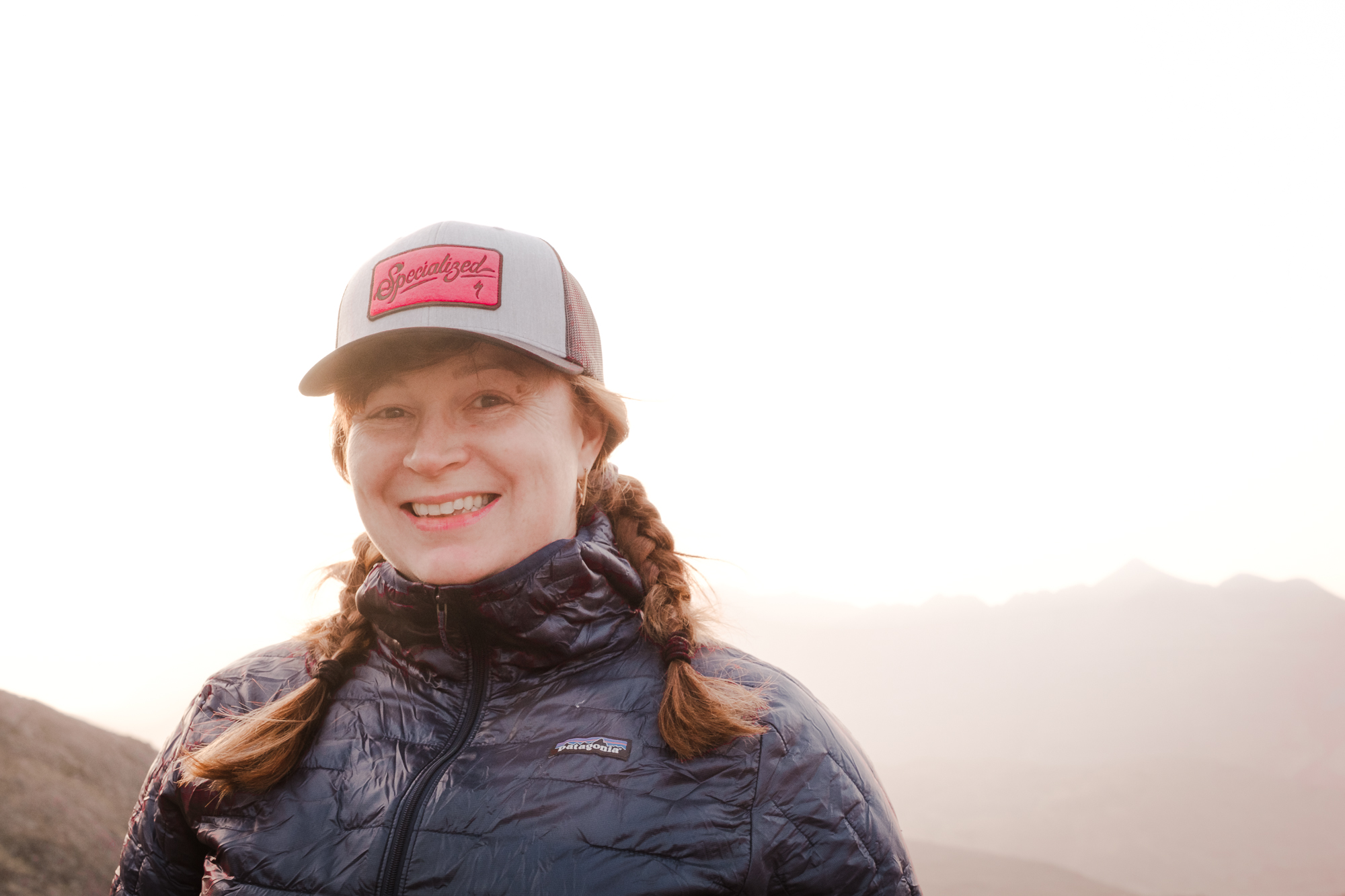The thrill of the boards, the massive gains you can expect in stamina and explosive power, the chance to emulate Sir Chris Hoy or Laura Kenny... track cycling has something to offer nearly every rider, and it's loads of fun. So how do you get started with track cycling?
What is a velodrome?
Track cycling involves riding or racing a track-specific bicycle around a purpose-built, cambered and banked track, at a velodrome. It's important to note that there are both indoor and outdoor velodromes, with indoor being the more popular option – especially in the UK.
The track at an indoor velodrome is usually constructed from wood, with two long sides and two shorter, more steeply banked sides, forming an oval shape.
An Olympic-standard velodrome has a track of 250 metres. There are also outdoor velodromes, such as Herne Hill in London.
Many velodromes run introductory sessions to get you started and open sessions so you can progress.
What do the coloured lines on a velodrome mean?
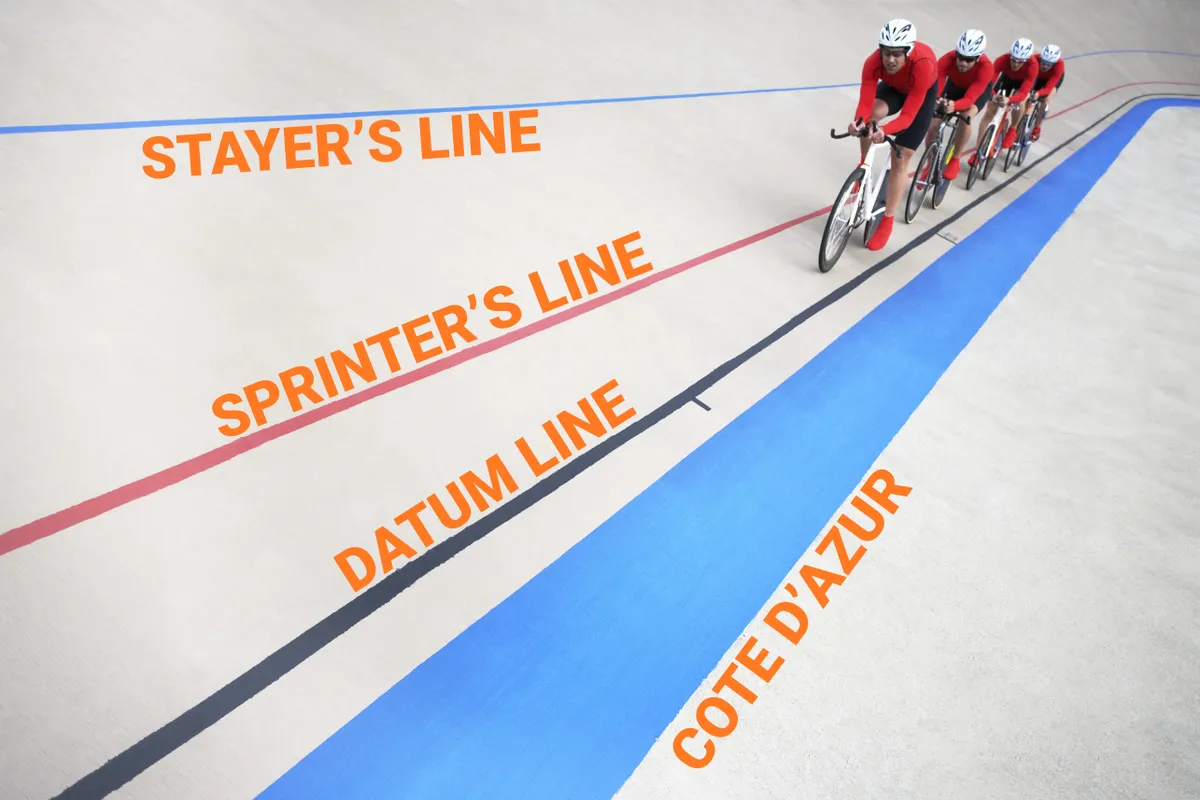
There are coloured bands painted at various intervals up the track. At the base, adjacent to the track, is a blue band, which is called the ‘côte d’azur’. This is not technically part of the track – you should try to stay out of this part.
Then, 20cm above the blue band, is a black, 5cm-thick line that defines the length of the track – so this line will be 250m long on an Olympic-standard track. This is also known as the datum line.
Above that by 90cm is the red sprinter's line; the gap between black and red marks the optimum route around the track.
Lastly, a minimum of 250cm, or halfway up the track, there is a blue line called the stayer's line. This is used in stayer races (races behind pacemaker-motorbikes) as a separation line.
What is a track bike?
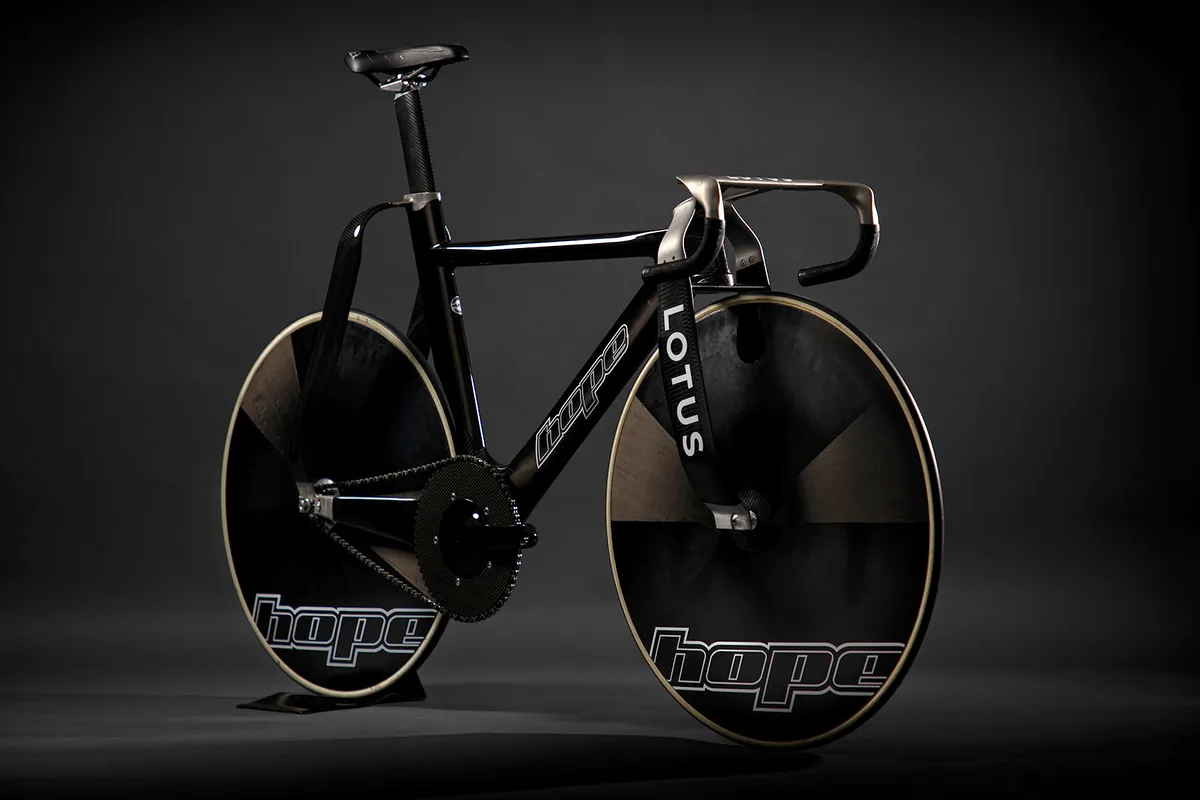
Modern track racing bikes are designed to be aerodynamic and exceptionally stiff.
At Olympic level, track bikes look like something from the future, with extraordinary amounts of effort (and money) going into making the fastest bike possible.
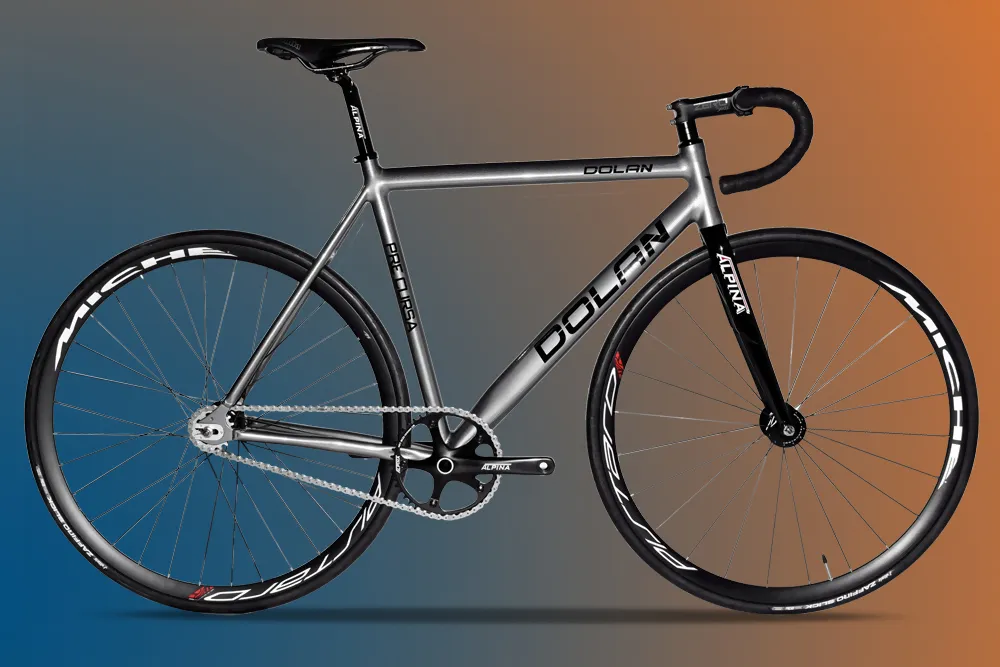
At a beginner or enthusiast level, bikes look more like stripped-back versions of road bikes, with familiar frame shapes and – depending on the type of racing – drop handlebars.
All track bikes are fixed wheel (in other words, they cannot coast) and have no gears or brakes.
Most velodromes that offer taster sessions will also offer bike hire, though track bikes are pretty affordable compared to road bikes thanks to their relative simplicity.
For more information, check out our in-depth guide to track bikes.
Track cycling events explained
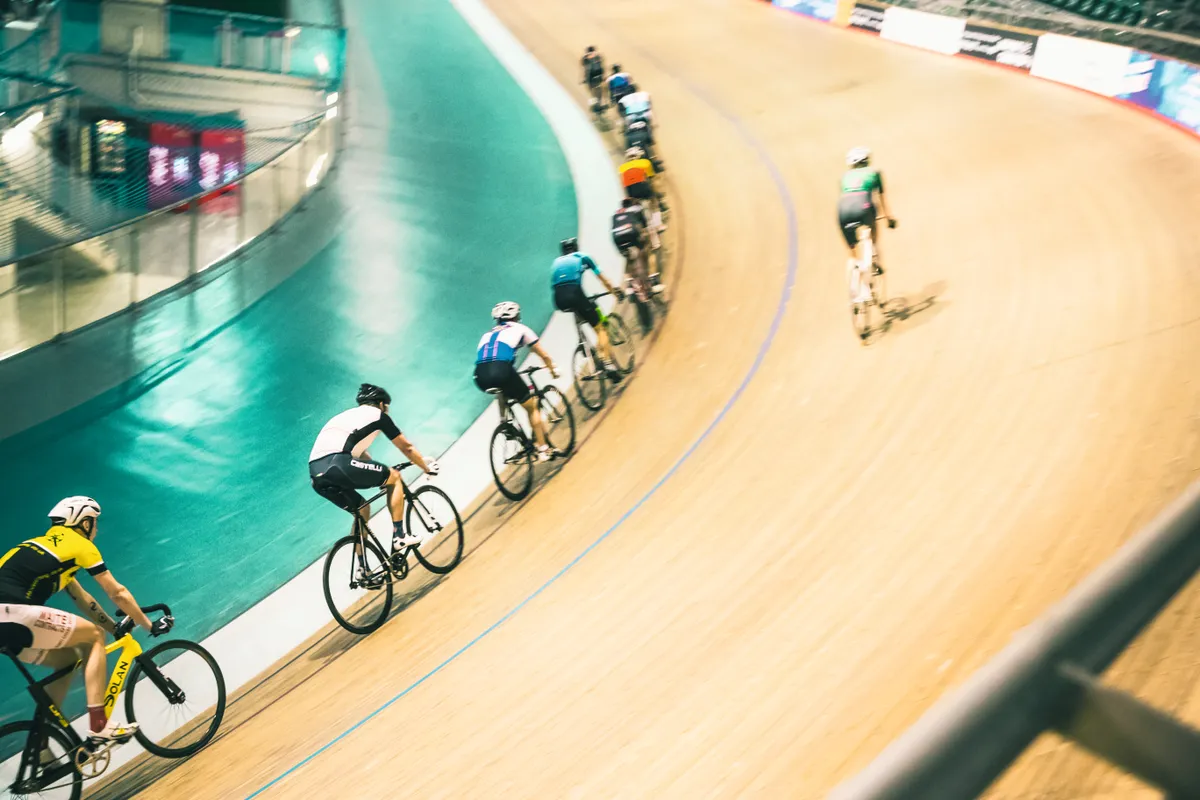
There are a number of different types of race events that take place in the velodrome.
These include individual and team sprints and pursuits, time trials, points races and more exotically named variants such as keirins – an outlandish form of motor-paced cycle racing that originated in Japan.
For more information, check out our full explainer on track cycling events or find out how to watch the 2022 Track World Championships.
Track cycling for the first time – a beginner's perspective
So, what's it like for newbies?
Back in 2016, Annie Gowing, a member of amateur women’s team the Crankettes, spent the day with her teammates at Newport’s Velodrome. She reported that “Walking out into the velodrome and seeing the banking for the first time does nothing to calm the nerves! It’s so much steeper than it looks on television – 42 per cent at the Newport Velodrome.”
After a briefing from their coach for the day, the Crankettes were asked to ride around the concrete area surrounding the infield, speeding up on the straights and slowing for the corners.
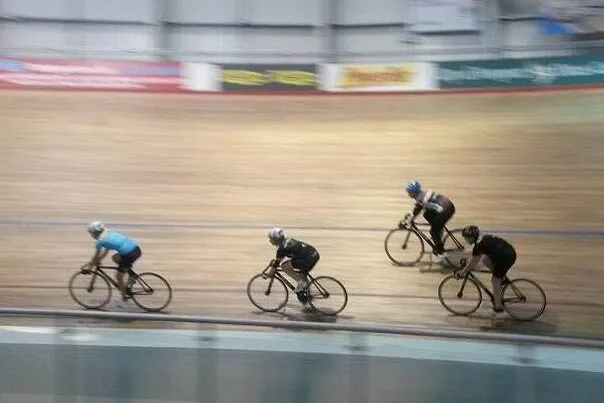
"This was to get used to riding a fixed-wheel bike," says Annie. "You cannot stop pedalling, so you control your speed by your cadence [the speed of your pedalling].
"It wasn’t as easy to control the pace as you might imagine. Then we practised how to stop, slowing our cadence down to a walking pace, and coming alongside the inner railings until we came to a halt.
"Once we’d mastered these skills, we were allowed on the track itself. To get up to speed we used the almost-flat, painted wooden section at the base of the boards. Then, when we were up to 20mph, we could move onto the track itself, initially between the red and black lines, and eventually moving up to the blue line.
"Despite our fears, the bike was actually very easy to ride and felt quite stable on the drops.
"We found we had to do no more than pedal in a straight line, keeping up the speed, and the banking took care of the rest – no need to steer, or lean into the corners. It was an amazing feeling and by the end of our first turn, all the terror had gone.
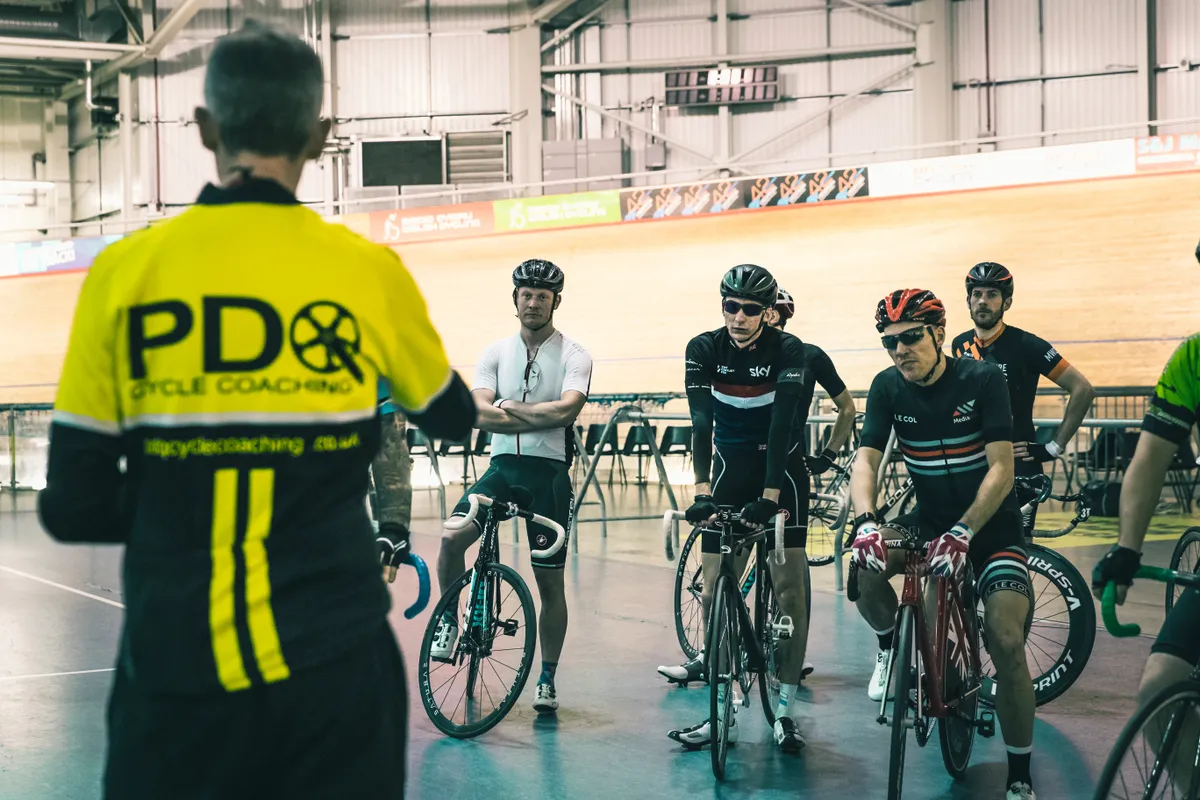
"Our next task was to ride in a single-pace line formation, taking turns to peel off the front, riding up to the blue line and then dropping back on to rejoin the group at the back. All of us were very comfortable with this exercise, being well used to team time-trialling.
"Our final exercise was a pursuit. At a signal from [coach] Brian, the front rider had to sprint away from the group and keep going until they rejoined at the back. This was pretty tough. But great fun and good for getting our speed and confidence up.
"The two-hour session was over all too quickly. Everyone was buzzing, and we can't wait to go back."
5 tips for track cycling beginners
1. If you can ride a bike, you can ride on the track
Don’t be scared. If you can ride a bike, you can ride on the track. Track bikes are very simple to ride and you’ll soon get the hang of riding fixed wheel.
2. Don't forget your helmet and gloves
Helmets and gloves are compulsory, so don’t forget to take them.
3. Bring your own pedals and cleats
If you’re hiring a bike at your chosen velodrome, it’s worth changing the cleats on your shoes to match their preferred clipless pedal system. The pedals on hire bikes generally can’t be changed and the only other option is usually to use pedals with toe clips.
4. Take plenty of refreshments
Take plenty of water and drink often – track cycling is thirsty work.
5. Bring your mates
Go with friends, make an outing of it, and have fun.
